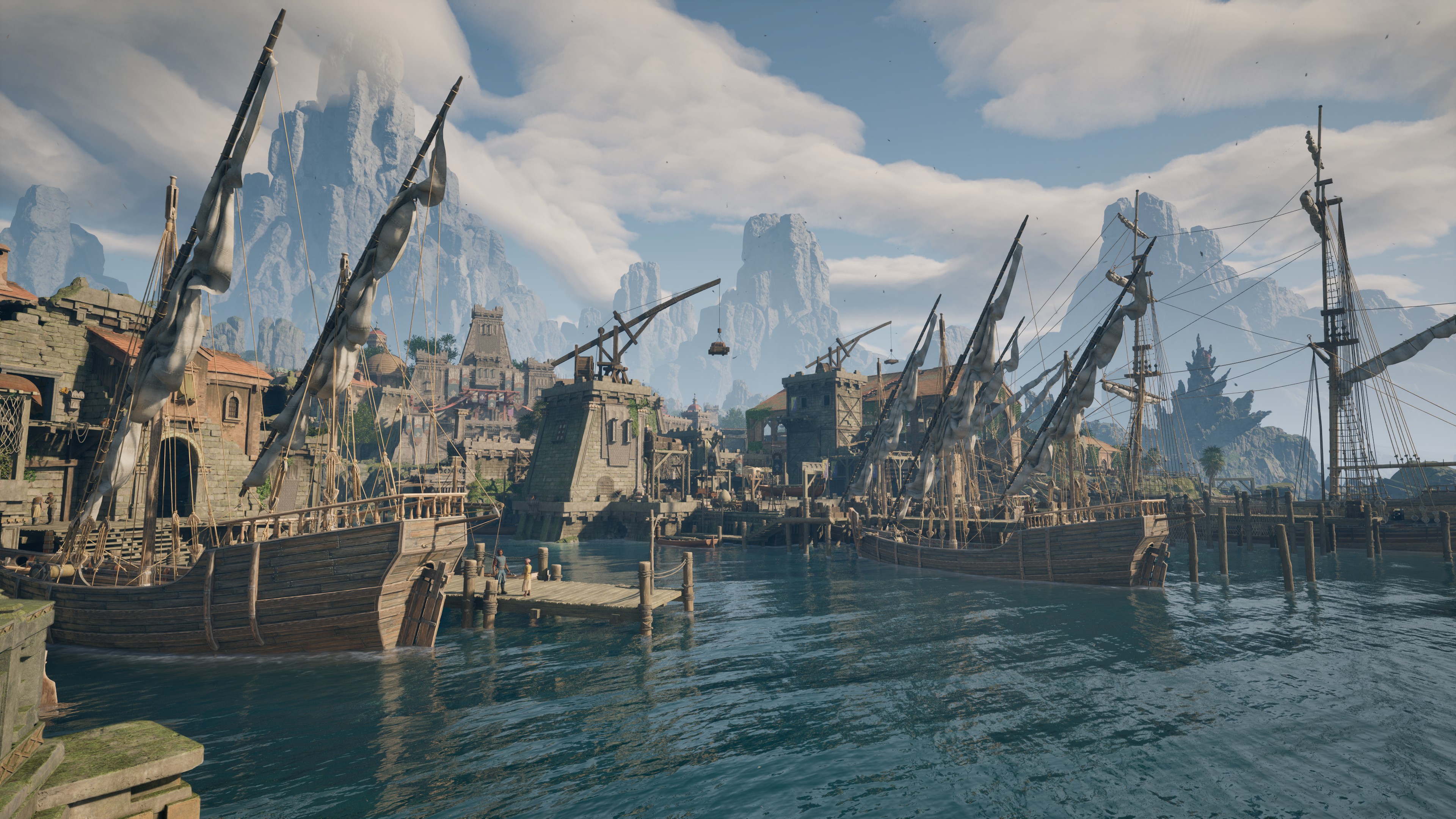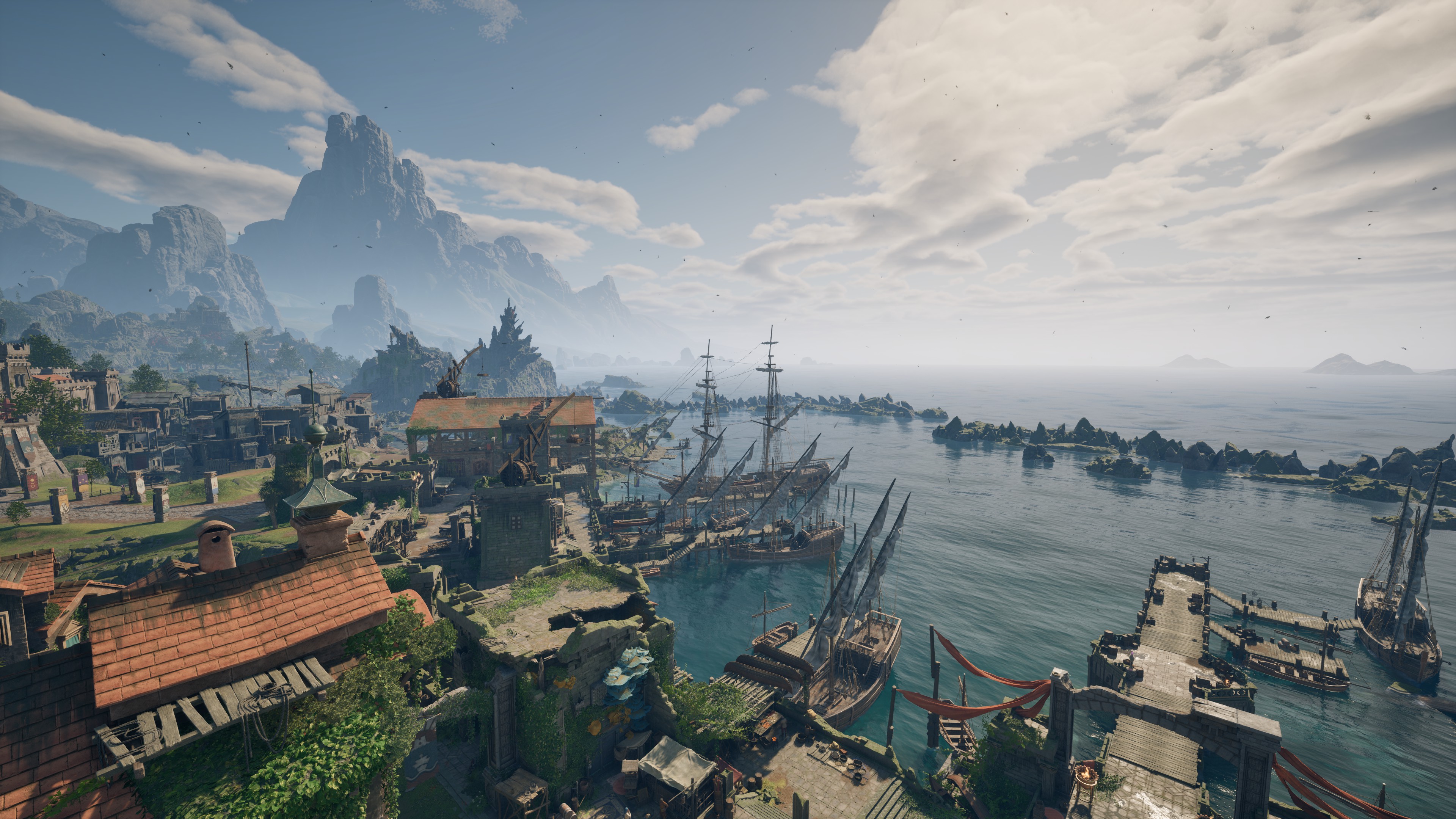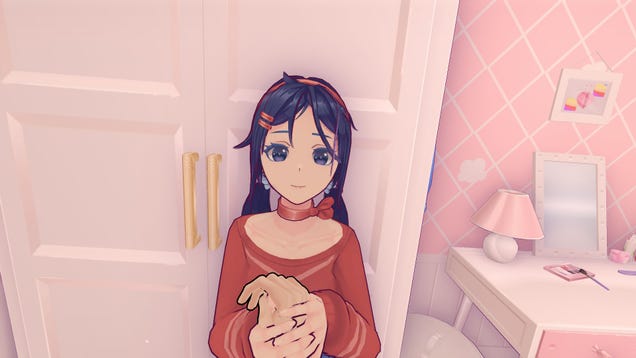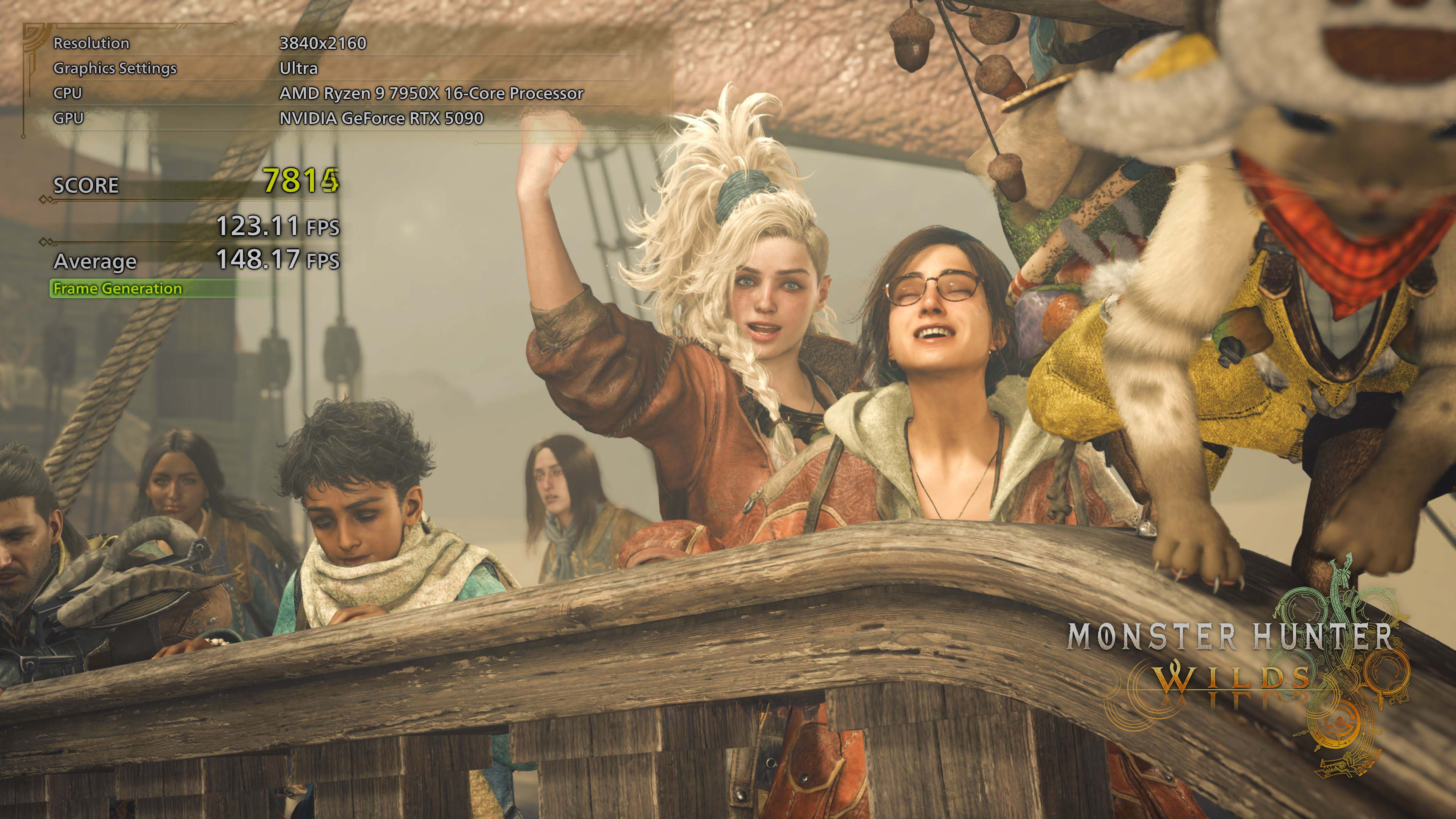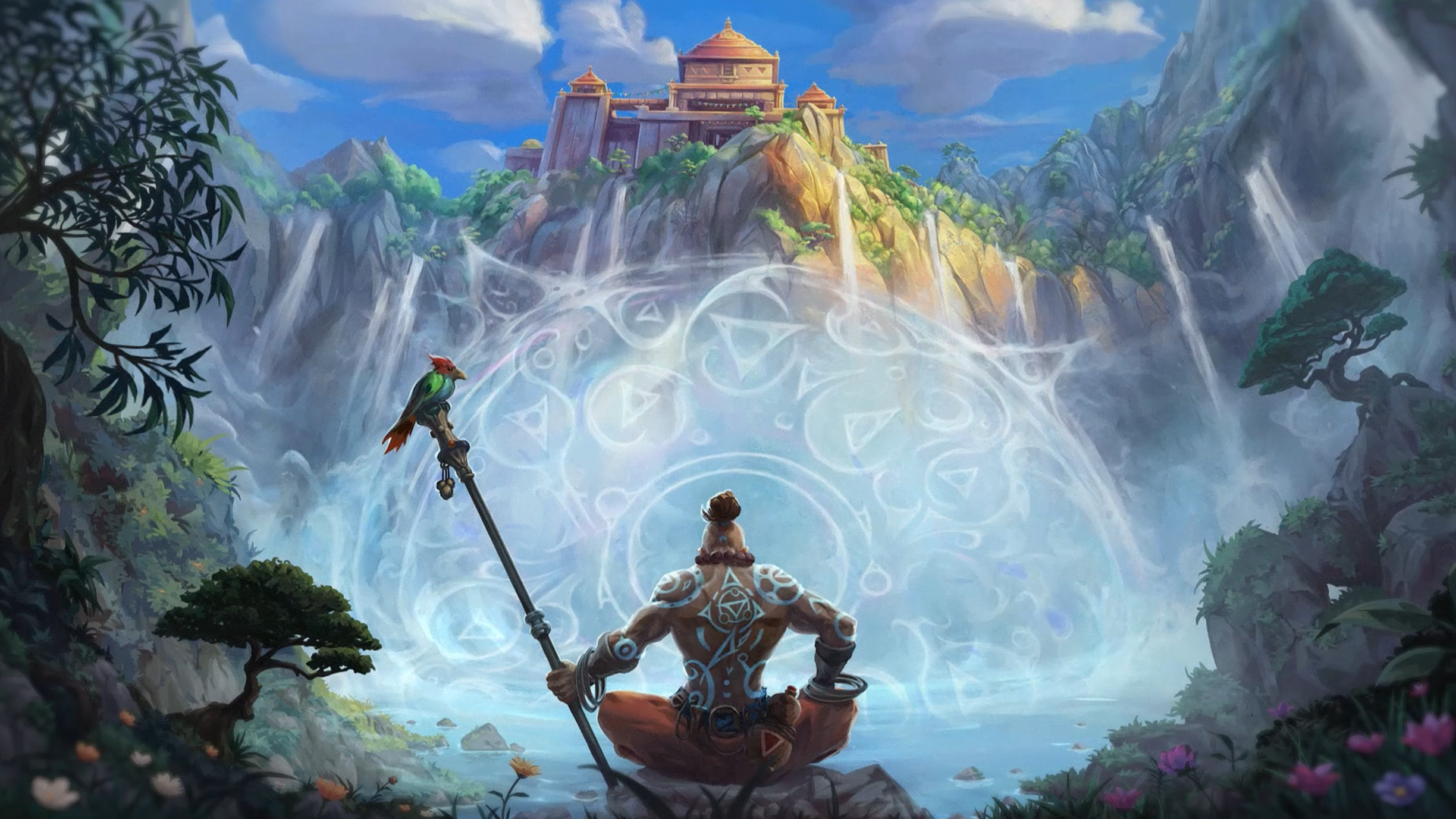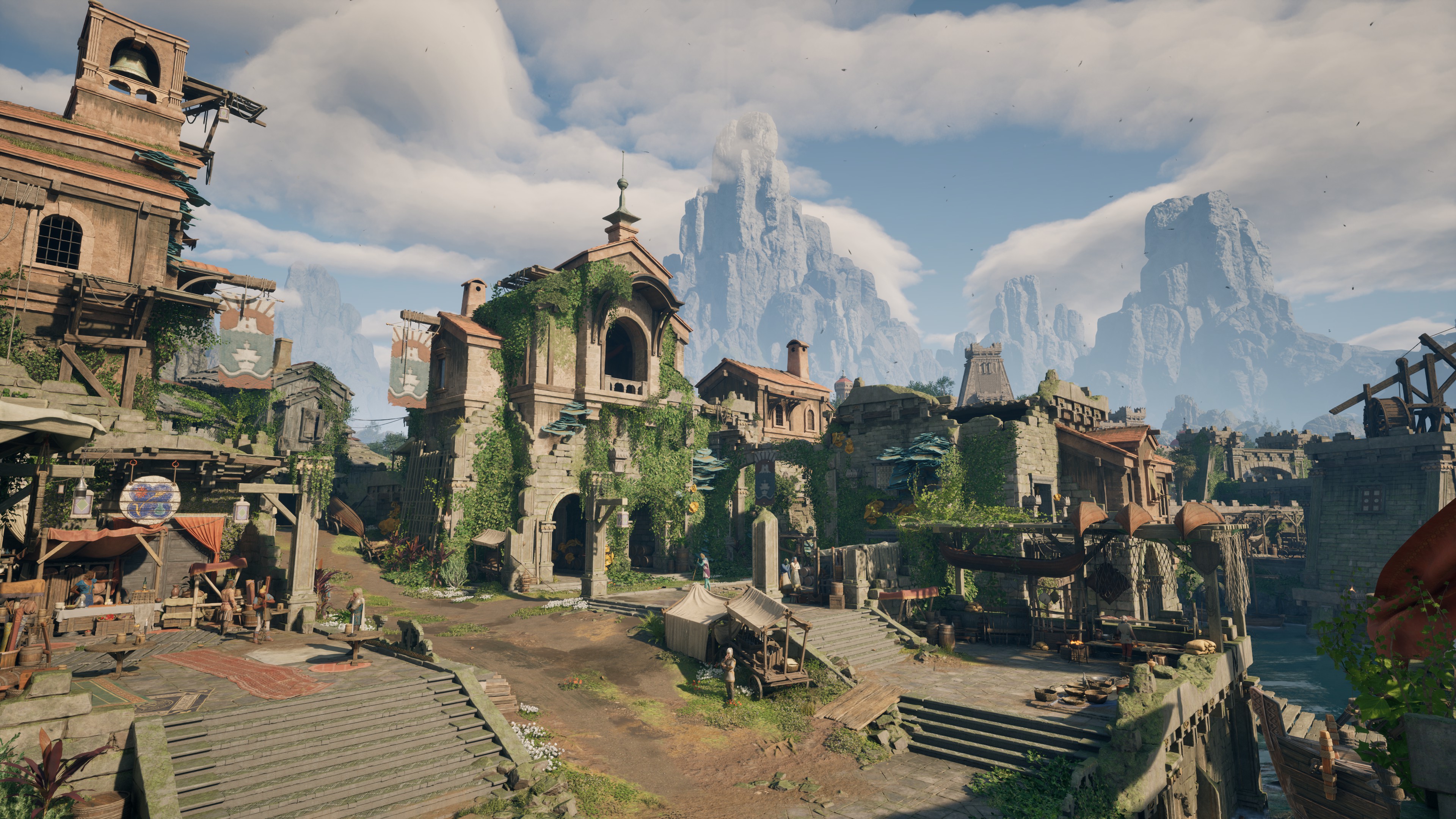
Temper your expectations, avoid upscaling, and just go by feel rather than frame rates.
Originally planned as a Skyrim-like open-world game, set in the Pillars of Eternity universe, Avowed eventually transitioned into being semi-open. By that, I mean lots of very large, open levels, all connected together. But that change aside, in many ways, Avowed does feel like a cross between Skyrim and PoE, and if you’re a fan of both games, you’ll almost certainly like this one too.
What you might not be so keen on is that developers Obsidian targeted a 30 fps performance window for the Xbox Series X/S version, and while that doesn’t necessarily mean the team set out for the PC version to be the same, as you’ll soon see, Avowed isn’t pushing out ultra-high frame rates.
On the plus side, it does look very good, with some notable caveats. Created using Epic’s Unreal Engine 5, Avowed doesn’t tote path-traced global illumination, but you do have the option to switch to Lumen. From my testing, it seems to be operating in the ‘software RT’ mode, which means you don’t need a ray-tracing-capable GPU to enable the feature. However, that mode isn’t as visually accurate as the hardware-accelerated one, so don’t expect Alan Wake 2 levels of graphics.
Obsidian lists the minimum PC requirements for Avowed as being a Core i5 8400 or Ryzen 5 2600 CPU, with an Arc A580, GeForce GTX 1070, or Radeon RX 5700 for the GPU. These suggest that the game is more likely to be GPU-limited, rather than being super heavy on the CPU, but it’s a little more nuanced than that. At least you don’t need a lot of system memory, as 16 GB of RAM is both the minimum and recommended amount.
Test PC specs
- Acer Nitro V 15 (Gaming mode), Ryzen 7 7735HS, GeForce RTX 4050 Laptop, 16 GB DDR5-4800
- Core i7 9700K (65 W), Radeon RX 5700 XT, 16 GB DDR4-3200
- Ryzen 5 5600X (65 W), Radeon RX 6750 XT, 32 GB DDR4-3200
- Core i5 13600K (125 W), Radeon RX 7800 XT, 32 GB DDR5-6400
- Ryzen 9 9900X (120 W), GeForce RTX 4070 Ti, 32 GB DDR5-6000
- Core Ultra 7 265K (250 W), GeForce RTX 4080 Super, 48 GB DDR5-8000
Benchmark runs were carried out in an early location, a seaport called Claviger’s Landing, which offers a good range of graphics loads. From geometry-heavy buildings and environmental detail, to open vistas, and expanses of water to showcase how the game’s engine handles reflections. Other areas of the world of Avowed can be more demanding than this region but it’s a good indicator of how well the game will run in general.
If you’re a frequent reader of these game performance analysis pieces, you may have already noticed that one commonly used platform is missing from the list of test PCs above. On the Asus ROG Ally X I use, the game ran fine once but after changing the graphics settings, it would just fully crash upon loading. Deleting the game and all other associated files didn’t help, and I never managed to complete any benchmark runs with that device.
The review code was otherwise very stable, with just the odd glitch, including an old-school ‘falling through the floor’ bug that occasionally reared its head. On some systems, the game would crash when executing its initial shader compilation but never did so on the second attempt.
Low quality preset
Starting with the Low quality preset, to kick off our look at native rendering performance, the above video shows that Avowed looks pretty decent from the start. All these videos were captured at 4K, though they’re shown at 1080p here to reduce the file size. Beyond that, nothing else was changed from the preset values.
My first criticism of the Low preset is just how jarring the model and shadow pop-in is. This is to be expected to a certain degree at minimum graphics settings in any game, but it’s quite stark in Avowed. So much so that I don’t recommend using it, no matter how weak your gaming PC is.
Fortunately, the average performance at 1080p and even 1440p is more than good enough on the Core i7 9700K, RX 5700 XT combination to suggest that the Low preset is more suited to very basic gaming PCs. It’s a shame that Avowed wouldn’t run on the ROG Ally X because it would have been very interesting to see how a handheld gaming PC copes.
However, what’s more important to note here are the 1% low frame rates. With the exception of the Core Ultra 7 265K PC, possibly due to using DDR5-8000 RAM, none of them achieves a low of 60 fps and that doesn’t bode well for higher graphics settings.
Medium quality preset
Switching to the Medium quality preset instantly improves the overall look of Avowed, as there is considerably more detail in the world. Colours seem richer and even the pop-in of shadows is reduced. It’s still there, of course, and if you quickly scan through the other presets, you’ll see that it never quite disappears, even on maximum graphics settings.
That’s a bit disappointing, to be honest, because when Avowed is looking at its best, it really is very pretty. But when you move about, the cracks start to show in the picture.
One such niggle is the fact that certain objects have a clearly defined boundary that triggers their animation. For example, flags hanging in the distance are stiff as a board until you get reasonably near to them. As you cross the trigger boundary, they immediately start to swing about as if blown by the wind. It’s a somewhat clumsy way of reducing the CPU load and the zone really should be much smaller at higher quality settings.
High quality preset
The High quality preset marks the sweet spot between visual fidelity and overall performance. At 1080p, all of the test PCs produce acceptable frame rates on average and while those 1% lows don’t look great, it actually feels okay in-game. This is by far the oddest behaviour of Avowed I’ve come across in my testing—running around with high frame rates feels worse than it does at, say, 40 fps (with 25 fps 1% lows) and this ties in with Obsidian’s comments about the development targeting 30 fps on consoles.
It would seem that the entire world is designed with that performance window in mind, regardless of the platform, and to be fair to Obsidian, Avowed does feel perfectly fine to play at that level. At 60 fps, the game feels smooth as silk, even though the 1% lows are nowhere near that rate.
However, this doesn’t mean it is always plain sailing. On the lower-tier PCs, traversal stutter frequently rears its head—as you move through the map, the game will briefly judder, probably due to loading in required assets. Avowed isn’t especially heavy on VRAM (8 GB GPU owners will be fine) but neither is it very light, and loading all of the models and textures for a map in one go would probably push the VRAM requirements up too far.
At least there’s no hint of shader compilation stutter, as the game handles all of this during loading. It’s a relatively quick process too, even when doing it for the first time, though it will repeat the process (albeit very briefly) if you change a graphic setting.
Epic quality preset
Using the Epic quality preset showcases Avowed at its very best, though it’s arguably only a small improvement over the High preset. Pop-in is at its minimum, though still present, but the best reasons for using this preset are the appearance of water and the quality of the shader-based antialiasing.
With the lower quality presets, they’re not so hot looking, especially at 1080p. In fact, the antialiasing is terrible at 1080p Low quality and that alone is good reason to never use that preset. The appearance of water, especially the surface of the sea, isn’t great either, unless you use the Epic preset, and smaller bodies of water, such as puddles on the ground, never produce really detailed reflections.
While all of the test PCs run Avowed pretty well at 1080p Epic, the 1% lows of the weaker systems are too low, and that feeling of smoothness experienced with the High preset gives way to lag and stutters. This was especially true of the RTX 4050 laptop and I’m certain that its 6 GB of VRAM is the primary cause, even though the recorded 1% lows are better than those of the 8 GB RX 5700 XT.
There’s one setting I’ve not mentioned so far that, in theory, should make the graphics even better and that’s the option to enable ray tracing. It’s a simple toggle, requiring a game restart to work, but it’s not clear how the use of Lumen integrates with the other quality settings. I did reach out to the publishers about this but I’ve yet to hear back from them.
Lumen ray tracing
As already mentioned, activating the ray tracing toggle enables Lumen in ‘software RT’ mode, which is why the Radeon RX 5700 XT is able to use it. However, I’m on the fence as to whether it’s worth using or not.
To begin with, ray tracing with the Epic quality preset doesn’t work the tested PCs any harder than the native Epic preset—in some cases, it’s a fraction slower, in others it’s the same performance, but in the case of the RTX 4070, it ran my benchmark test slightly better. That would be great news if Lumen made a big difference to the graphics, but it doesn’t or at least, not in the area that I tested.
I was hoping for better water reflections but they’re still quite low resolution, and while the overall lighting and shadowing are marginally better, there’s a distinct excess of bloom to my eyes. Everything seems a fraction more washed out than without Lumen but you may well get different results on your gaming PC and monitor.
The good news is that it doesn’t take long to activate ray tracing, reload the game, and see if it’s worth using. Unlike upscaling, which might not be worth using at all.
Upscaling performance
Upscalers achieve a performance boost by lowering a frame’s resolution by a set percentage before most of the rendering takes place. A complex algorithm then scales it back up to the monitor’s resolution and then the GPU displays the frame after the final rendering touches have been applied.
We’ve reached a point in PC gaming where upscalers are expected to be supported and unfortunately, in some cases, they’re necessary to achieve a sensible level of performance. The good thing about Avowed is that it doesn’t really need upscalers; the bad news is that what it does have implemented isn’t particularly great. You get the full gamut of Nvidia’s DLSS 3.7 (minus ray reconstruction) but only the upscaler part of AMD’s FSR 3.
It might offer Intel’s XeSS too but my Arc A770 has decided to shuffle off this electronic world, and there’s no detailed info about the game’s upscalers on any official site. Avowed does offer Unreal Engine’s TSR upscaler but it’s no better than FSR, so there’s little reason to use it.
FSR 3 quality upscaling
Core i5 13600K, Radeon RX 7800 XT, 1440p High preset
At 1440p, FSR 3 Quality mode should provide a small performance uplift without impacting on a game’s visuals but if you watch the above video carefully, you’ll notice smearing and ghosting in places, and the surface of the sea towards the end of the run looks especially poor. And while you get a very nice improvement to the average frame rate, FSR does almost nothing for the 1% lows.
You might feel that this is acceptable for your needs but recall the point I was making earlier about the game not feeling smooth at high frame rates. Upscaling just makes that sensation more noticeable. Hopefully Obsidian will be able to resolve the poor quality of FSR with future patches.
FSR 3 Quality upscaling
Core i7 9700K, Radeon RX 5700 XT, 1080p High preset
Just to make the point about the somewhat iffy implementation of FSR in Avowed even clearer, the RX 5700 XT is the sort of graphics card that would normally benefit from upscaling in a modern 3D game. Except here it makes no difference whatsoever, other than to make the graphics worse.
If the native performance of the likes of the 5700 XT wasn’t decent, I’d be very disappointed and more than a little annoyed with this situation. It’s generally accepted that while AMD’s FSR isn’t quite on par with Nvidia’s DLSS, it’s more than good enough in the grand scheme of things. Apart from here, of course, where it’s borderline useless.
DLSS Balanced upscaling
Ryzen 9 9900X, GeForce RTX 4070 Ti, 4K Epic, Lumen ray tracing
Not that DLSS runs any better. Sure, the graphics aren’t butchered like they are with FSR, but the performance uplift isn’t great, even with frame generation. One might argue that asking an RTX 4070 Ti to cope with 4K Epic quality with Lumen is a silly task, as it’s not that kind of GPU, but DLSS Performance upscaling forces the frame resolution right down to 1080p.
Natively, the Ryzen 9 9900X, RTX 4070 Ti test PC achieves 98 fps on average, with 1% lows of 44 fps at 1080p Epic quality with Lumen. However, DLSS Performance at 4K only results in an average performance of 66 fps. That’s markedly different and it shows that DLSS hasn’t been implemented well, either.
The only reason why one should bother using DLSS is just to get better antialiasing, especially when using one of the lower-quality presets. Shame there’s no DLAA option
Final thoughts
The title of this performance analysis is ‘Sometimes good, sometimes, frequently odd’ because I feel this best summarises the PC version of Avowed. On the High or Epic preset, it does look good and even runs pretty well. The bad? Well, that’s obvious: the shoddy upscaling, the wonky antialiasing, the disappointing 1% lows, and the fact that it’s yet another Unreal Engine-powered game that sports traversal stutter.
But what’s odd about it? Well, at the start of this article, I described Avowed as being Skyrim in the Pillars of Eternity universe. Not because it’s a fantasy RPG but because the world has that same expansive-yet-empty feel as Skyrim. While testing the early area of Claviger’s Landing, I decided to look at the frame times on two systems, the Core i7 9700K and the Ryzen 9 9900X, to see if I could better understand why the 1% lows were so…well…low.
Looking at the old Coffee Lake chip first, you can see just how variable the frame times are, bouncing around all over the place. And yet there’s nothing about the world that suggests there’s a huge demand on the CPU. There aren’t hordes of NPCs and what few there are either stay in one place or wander through short paths.
It’s a smoother affair with the Zen 5 chip, as one would expect, but it’s still not great and bizarrely, in the section of the benchmark run where the 9700K’s frame times even out, they get worse with the 9900X. In the same test, the Ryzen 7 5700X3D was being worked surprisingly hard, with four logical cores (i.e. four threads on two cores) averaging 60% utilisation, with another four being around 50%.
That suggests Avowed is quite CPU intensive, but if it were, then the more modern test PCs would achieve far better 1% lows than the older and lower-tier ones. Only the Core Ultra 7 265K gaming rig stands apart, though that’s certainly due to the use of DDR5-8000 in that system. As I said, it’s odd.
Avowed is a lot of fun to play and it’s rich in ‘old-school RPG’ vibes, which help in no small way to move one’s attention away from the wonky performance. Just stick to the High preset, avoid upscaling unless you have a GeForce RTX graphics card, and aim for an average frame rate around the 60 fps mark (reducing shadow quality and draw distance are the main things to change). Oh, and ignore the 1% lows. In fact, just ignore any performance metrics altogether and judge it on feel.

